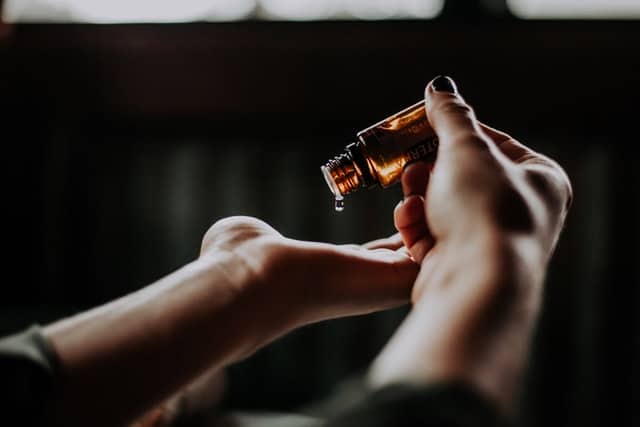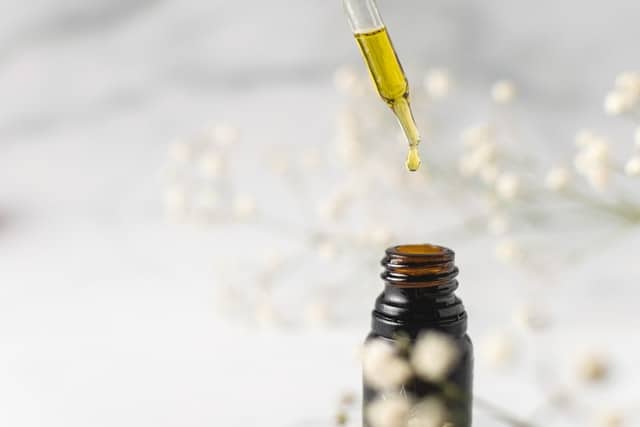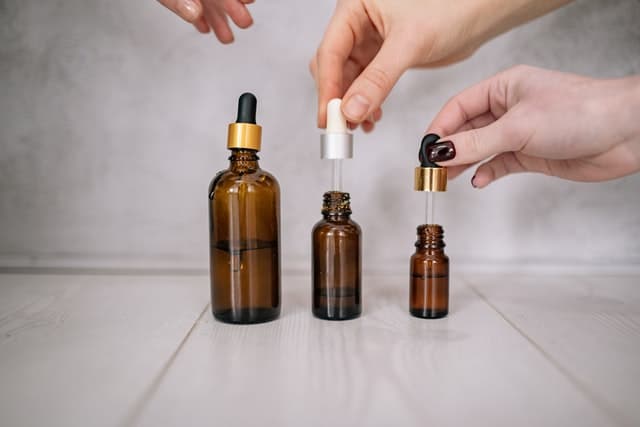Essential oils carry a ton of benefits from sleep improvement to pain reduction. But if you’ve done any kind of research on using essential oils, you’ve probably learned by now that using or making them on your own requires a level of responsibility. If not used properly, they can do much more harm than good.

Some commonly used essential oils are phototoxic and can cause damaged or irritated skin (including blisters in severe cases) through sun exposure, or UV rays. Not only is it painful, but can even result in long-term skin discoloration. Examples of popular phototoxic essential oils include lemon, bergamot, angelica root and cumin.
Others can severely dry out your skin and give you some pretty bad rashes (or worse). Examples of essential oils that commonly result in contact dermatitis include tea tree oil, sandalwood, and lemongrass.
To lessen the likelihood of either of the above from happening, it’s important to dilute your essential oils before using them and to dilute them properly. Let’s talk about this a little more:
Why do essential oils need to be diluted?

Many essential oils are too potent to be applied to the skin directly. Doing so can result in further irritation or even damage to the skin especially if you’re applying to your face. That said, most essential oils are mixed with carrier oils, creams and lotions before they are applied.
Some popular carrier oils for essential oils include:
- coconut oil
- jojoba oil
- almond oil
- olive oil
- avocado oil
- grapeseed oil
- rosehip oil
- argan oil
But even then, diluting essential oils isn’t a walk in the park and at times can be quite confusing. Unfortunately, many dilution charts give too much information about bottle sizes and not enough about other very important factors.
When diluting, you also must take into account:
- The age of the person using it
- The reason you’re using the oil (or blend)
- How often you’ll be using it (how much you will need)
- Existing skin conditions, medications, and level of skin and olfactory sensitivity
The last point is perhaps the most crucial: The age of the user. Proper dilution ratio is extremely important to keeping babies, children, or the elderly safe. It is also crucial for anyone who is ill. In a nutshell, the younger or more sensitive the user is, the more you want to dilute the oil.
By now your head is probably already spinning with all that you need to remember before making and using your favorite essential oils. Have no fear! If you’re looking for a simple explanation for how to properly dilute essential oils, you’ve come to the right place.
How much should I dilute my essential oil?

Calculating how much you should dilute your essential oil is not necessarily complicated per se. It just requires some thinking, planning, and yes, some mathematics. However, once you know how much you need for one bottle, all you’ll need to do is multiply and divide as necessary!
The following four step guide will help you properly dilute your essential oils based on their age, reason for use, and possible skin conditions they may have. Keep in mind that premature infants should not use any amount of essential oils.
Step 1: Determine the age of the person who will be using the essential oil.
| Age | Dilution Level |
| Premature Infant | DO NOT USE |
| 2 and Under | 0.25% dilution |
| 2-12 | 0.5% dilution |
| 12 and up (including elderly and pregnant women) | 1% dilution |
| 12 and up (standard use) | 2% dilution |
Step 2: Determine the reason why You will be using the essential oil.
| Reason for Use | Dilution Level |
| For use on a child (age 2-12) For use as a hot oil | 0.5% dilution |
| For an elderly or pregnant woman For someone with skin sensitivities For someone who was sick For someone who is sick and recovering | 1% dilution |
| Standard topical application (age 12 and up) | 2% dilution |
| Standard topical application (age 12 and up) | 2.5% dilution |
| Short-term use | 3% dilution |
| Short-term use, acute injury *with no sensitivities or recent major illnesses | More than 3% dilution |
Step 3: Determine how much you will need (how much you plan to use it).

Now that you know exactly how much you should dilute your essential oil based on age and the reason why you’ll be using it, it’s time to determine exactly how much of your essential oil and how much carrier oil you will need. This is where your math skills come in, so get ready!
The most commonly used essential oil roller bottle is 10ml. With a standard 2% dilution, you will need to use 4 drops. From there you will either need to multiply or divide the number of drops based on the size of your bottle. For example:
| 5ml Bottle | 10ml Bottle | 15ml Bottle | 20ml Bottle | 30ml Bottle | |
| 0.25% Dilution | ¼ Drop | ½ Drop | 0.75 Drops | 1 Drop | 1.5 Drops |
| 0.5% Dilution | ½ Drop | 1 Drop | 1.5 Drops | 2 Drops | 3 Drops |
| 1% Dilution | 1 Drop | 2 Drops | 3 Drops | 4 Drops | 6 Drops |
| 2% Dilution | 2 Drops | 4 Drops | 6 Drops | 8 Drops | 12 Drops |
| 2.5% Dilution | 2.5 Drops | 5 Drops | 7.5 Drops | 10 Drops | 15 Drops |
| 3% Dilution | 3 Drops | 6 Drops | 9 Drops | 12 Drops | 18 Drops |
Note: Since measuring half of a drop is difficult to do, it is simply easier to increase the amount of carrier oil used or round down the amount of essential oil used.
Step 4: Take Into Consideration You have any skin conditions, sensitivities, or medications that may interact with the essential oil
Remember, it is important to make sure the person using the essential oil does not have any allergies to the oil or any skin sensitivities that may worsen with use of the oil. If so, they may need to lower the dilution ratio or avoid using the essential oil all together.
Now that you know how to properly dilute your essential oils, you’ll likely find that diluting your essential oils has other benefits, such as helping increase its absorption, giving you enough to spread over larger surfaces, and perhaps most importantly, saving you a TON of money (good essential oils aren’t cheap)!
As always, if you have any questions or concerns about how much you should dilute your essential oil or whether you should use essential oils at all, consult your dermatologist or doctor.
Other Essential Oil Article You Should Check Out:
Essential Oils that Will Make Your House Smell Just Like A Spa
